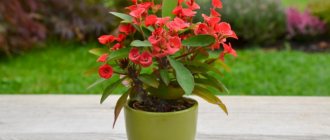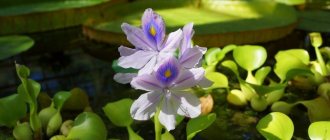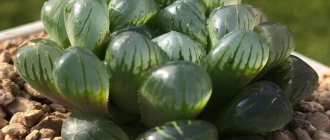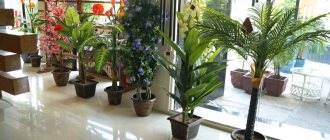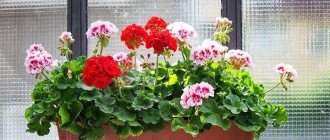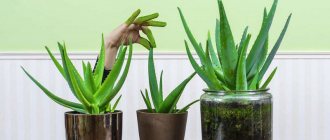Indoor air pollution is caused by insufficient ventilation, humidity, high temperature and toxic products. Thus, all varnishes, paints, adhesives that make up our furniture, plastic products, and cleaning chemicals emit poisonous and toxic substances, which make our homes dangerous.
Fortunately, nature is so wise that it has given us indoor plants that can effectively purify the air. In this article we will tell you about 10 indoor plants that will significantly improve the air quality in your homes and, of course, decorate the interior.
Ivy
Ivy is one of the most popular indoor plants because it grows quickly, is unpretentious, and adds coziness to a room by creating intricate patterns on vertical surfaces.
In addition to aesthetic pleasure, this climbing plant has great benefits for people. It is one of the most effective in absorbing carbon dioxide; it can literally suck fecal microparticles from the air, therefore it is an ideal air purifier for the bathroom and toilet. This is also helped by the fact that ivy can grow in low light conditions.
Ivy is the enemy of mold, so it can be a salvation in damp rooms. It neutralizes the effects of toxins that are released from non-ecological furniture, has antiviral, antibacterial and even anti-allergenic effects, therefore it is an excellent flowerpot for those who have pets.
Common ivy (lat. Hedera)
What it likes: spraying, abundant watering and at least 4 hours of sunlight a day. She also likes to be fed once every two weeks in the summer and once a month in the winter. In summer it feels comfortable at standard room temperatures; in winter, if possible, place your ivy in a cool place (12-15 degrees). At temperatures above 20 degrees in winter, regular spraying is required. Tolerates drafts and sudden temperature fluctuations well.
What she doesn’t like: too dry air, excessive fertilizing (leaves can dry out and fall off). Also, with insufficient lighting, the leaves of variegated ivy, colored with ornaments, may lose their pattern and turn green.
Sansevieria
If you don’t have indoor plants at home, then Sansevieria is a great option to start getting acquainted with them. It grows well and is easy to care for. This plant has long, stiff, dark green leaves with horizontal light stripes and spots. It has a yellowish border along the edges and grows horizontally from thick creeping roots.
We have an excellent article about varieties, propagation and cultivation of Sansevieria
With sansevieria in the bedroom you will sleep well. It releases phytoncides and disinfects the air. According to NASA, it is one of the best houseplants for absorbing toxins that are released into the air, including formaldehyde, nitric oxide, benzene, xylene and trichlorethylene. Sansevieria is also one of the few indoor plants that continue to convert carbon dioxide into oxygen even at night.
Proof that Sansevieria is extremely effective at absorbing chemicals from the air is that it is now used as a natural filter on space stations.
Sansevieria (lat. Sansevieria trifasciata)
What it likes: tolerates any amount of light equally well, but grows better in good light; in the shade it can change color. Requires normal room temperatures, but not lower than 14 degrees. Likes moderate watering, fertilizing once every three weeks.
Related article:
The tangerine tree is one of the most popular house plants
What it doesn’t like : waterlogging, as the roots are prone to rotting in wet soil.
Geranium
Useful and beautiful geranium
Under its beautiful pink flowers, geranium hides a real air purification system. It usually finds its place in the living room, but grows very well on the balcony or veranda. Some scientists claim that it is the number one air purifier in the home. Light-loving geranium is easy to care for. It tolerates both humidity and dryness (except for spraying). The main thing is not to allow moisture to stagnate; for this purpose, be sure to provide drainage when planting. To have a good aura in your home, be sure to plant geraniums!
Peperomia obtufolia
This flowerpot is very popular in room decoration. It has dark green leaves of a round shape with arched veins. Although its homeland is North Africa, peperomia grows well in our area and is quite unpretentious to the conditions, which is why novice gardeners love it.
Fleshy greens store moisture well, which is why peperomia is considered one of the hardiest indoor plants. It purifies the air from harmful impurities, including formaldehyde, benzene and other toxins, while simultaneously releasing phytoncides. Has antibacterial and antiviral effects. Peperomia is one of the indoor plants that most actively release pure oxygen.
Peperomia obtusifolia (lat. Peperomia obtusifolia)
What it likes : slightly acidic, loose soil, replanting at least once every three years to prevent the roots from rotting. Comfortable temperature - 20-25 degrees, likes abundant watering once a week, regular spraying and fertilizing.
What it doesn’t like : stagnation of water, drafts and cold, otherwise the edges of the leaves begin to turn yellow and the plant slows down growth or stops developing. Also, peperomia does not like direct sunlight, because in its homeland it grows in the lower tier under higher plants.
How do they clean?
Most plants undergo the process of photosynthesis, during which they absorb carbon dioxide and release oxygen. This occurs under the influence of ultraviolet radiation. As a result, the air becomes lighter and more pleasant for humans.
In addition, some types of domestic crops also have such features as, for example, the ability to secrete phytoncides. These substances fight various kinds of infections and bacterial microflora. They can be volatile (released by leaves and flowers) and non-volatile (contained in plant sap).
Their number directly depends on:
- season;
- state and age of culture;
- conditions of its growth;
- climatic features of the region.
The ionizing properties of some plants are also known. It is believed that the degree of air pollution is determined by the balance of the content of heavy (positive charge) and light (negative charge) air ions. Heavy ions are found in exhaust gases, smoke, and other toxic emissions. Negative light ions are produced by plants, and the more of them, the cleaner the atmosphere becomes.
Peculiarity! The best indicators in terms of ionization and purification are coniferous and deciduous species.
Moreover, most of them perform this function best in adulthood. Young trees produce significantly less phytoncides and negatively charged ions.
Aloe vera
Aloe is one of the plants whose healing properties are widely known. Typically stemless or very short stemmed, with thick green and fleshy leaves that grow directly from the central stem of the plant. The edges of the leaves are covered with small teeth.
Aloe not only has a luxurious appearance, but is also a very easy to care for houseplant. It is a succulent, so it does not require frequent watering. This plant can be a wonderful decoration for a kitchen window sill. Then it will always be at hand in case of any injuries during cooking, because the gel inside the leaves has healing properties against burns, cuts and many other skin problems.
Related article:
How to easily propagate Decembrist
Aloe also purifies the air from formaldehyde and benzene contained in varnishes, paints, detergents, materials from which furniture is made, and the like. This home plant absorbs carbon dioxide and abundantly enriches the air around it with oxygen.
Aloe vera (lat. Aloe vera)
Note! Aloe vera leaf gel can be used topically, but avoid ingesting it into people or animals. This may cause unpleasant symptoms such as nausea or diarrhea.
What it likes : aloe feels comfortable in a sunny place, at standard room temperatures from +13 to +27°C. From May to September you can safely keep aloe outside. The pot should have at least one drainage hole at the bottom to allow excess water to drain away. Also, if the aloe has a stem, choose a container deep enough so that the entire stem can be planted in the soil.
What it doesn’t like : direct sunlight, it dries out the leaves too much and the aloe turns yellow. It also does not like excessive watering, like all succulents, because due to excess water the roots can rot. Therefore, in winter it is worth watering aloe vera once every 3 weeks or even less often.
Our article about how to grow aloe from a leaf
Why and what does it need to clean the air from?
In the rooms in which we spend most of our time, there are always substances that have a detrimental effect on human health. They can accumulate in the body and disrupt the functioning of the immune, respiratory, cardiovascular and other systems. As a rule, these are chemical compounds released after any repair work, from paint, glue, rubber, plastic, as well as from computer and household appliances, furniture, carpets, curtains, etc. First of all, such compounds include: formaldehyde, benzene and trichlorethylene. In addition, the air may contain harmful gases, various allergens, nicotine, etc.
Chlorophytum crested
Chlorophytum is one of the most popular houseplants. This is a small beautiful plant in the form of a rosette-tuft. Leaves with yellowish edges bend beautifully from the center in different directions, releasing baby plants. It blooms with white flowers. Grows quickly, usually up to 20-30 cm. Looks beautiful in the interior when hanging and creating cascades.
Chlorophytum is so hardy that even if you're not a fanatic gardener and tend to forget about your indoor planters, you'll have a hard time starting this tough plant.
According to NASA, chlorophytum is one of the three best indoor plants, as it perfectly purifies the air from formaldehyde, carbon monoxide, benzene, carbon monoxide and xylene, a solvent used in the leather, rubber and printing industries. It is also useful in areas where people smoke because it is one of the best filters against cigarette smoke. As an added bonus, this houseplant is safe for pets.
Related article:
7 basic rules for caring for a flower: women's happiness
Chlorophytum crested (lat. Chlorophytum comosum)
What it likes: The plant is unpretentious, but grows best in bright indirect light, cool room temperatures and relatively dry soil. Artificial light suits her and is also tolerant of shade, but slows down her growth and development. Requires abundant watering in summer, moderate in winter. Feeding - once a month, sometimes you need to spray.
What she doesn't like: Direct sunlight.
How many cleansing houseplants do you need?
Of course, one small indoor plant, even one with the highest air purifying abilities, cannot significantly affect its quality. Therefore, there should be several such crops in the house. For example, you can place 3-4 plants on the windowsill of each room, and in the living room, if its size allows, install a decorative lemon tree, ficus, or palm tree.
In general, it all depends on the size of the room itself. For small rooms, 2-3 plants are enough; larger rooms require more. In this case, it is necessary to place them depending on the required conditions, not forgetting about the interior of the room.
Ficus benjamina
This is a beautiful and popular houseplant with slender branches that curve gracefully from a light gray trunk or several. They can be intertwined for decorative appeal. The leaves are dense and can be of different colors: dark green or with light spots.
Ficus is an excellent filter against allergens, dust, and many air pollutants. It actively absorbs harmful gases (especially effectively purifies the air from acetone, benzene and trichlorethylene).
If you have pets or small children, make sure they do not eat ficus leaves. This is not life-threatening, but may be irritating.
Ficus Benjamin (lat. Ficus benjamina)
What it likes: watering once a week with water at room temperature (especially in winter) so that the soil is always slightly moist. Ficus also likes to be fertilized once every 2 weeks. Loves good diffused lighting (even a little direct sunlight in the morning), normal room temperatures, but not lower than 16 degrees.
What it doesn’t like: drafts, wind and excessive watering. Wet or poorly draining soil causes roots to rot, and lack of watering harms the plant and causes leaves to drop. Doesn't like being moved. In this case, the plant may fall into “stress”, which causes the leaves to fall off.
Calathea
Calathea and its original leaf color.
The illustration for the article is used under a standard license ©sadvokrug.ru In addition to its beautiful, unique and original foliage, the plant purifies the surrounding air from many more or less toxic substances. Calathea care is simple and requires virtually no maintenance. After purchase, if the pot is too small, replant the plant so that it can grow properly. Then, every 2-3 years, preferably in the spring, replant your calathea into a slightly larger pot. Calathea roots are afraid of excess water. For beautiful growth, beautiful and magnificent foliage, it requires regular fertilization.
Spathiphyllum
This beautiful flowering houseplant is popular for its ease of care. The leaves are basal, oval or lanceolate in shape with a strongly protruding central vein. Blooms in April-July. White flowers are located on high stalks.
NASA research has found that spathiphyllum is very effective at filtering volatile organic compounds, which include formaldehyde, trichlorethylene and benzene.
Attention! Ingestion of any part of this plant may cause nausea, difficulty swallowing, or a burning sensation in the mouth or skin.
Spathiphyllum (lat. Spathiphyllum)
What it likes: a large amount of diffused sunlight, in the shade the leaves become elongated and change color to dark green, and flowering lasts a shorter time or does not occur at all. Likes air temperatures between 18-22 degrees, in winter it can be dropped to 16, but not lower. Regular watering (more in summer than in winter), always with settled water (at least 24 hours). It loves high air humidity and needs constant spraying, but when flowering, water should not get on the buds. Feed once a week in summer and autumn, once a month in winter.
Related article:
Why does Crassula (money tree) grow slowly and how to speed it up
What it doesn’t like: drafts, direct sunlight, it can cause leaf burns. It does not like the soil to dry out; the leaves begin to dry out and droop. Excessive watering also harms the plant. Due to stagnation of liquid, dark spots appear on the leaves, and the plant may even die.
Ofazende.ru recommends: Spathiphyllum - care and cultivation at home
Dracaena marginata or Dracaena marginata
A plant with a wooden elongated stem and leaves 30-45 cm long and 1-2 cm wide. The leaves are collected at the top, mostly green, but there are varieties with yellow or red stripes. Dracaena fringe is perfect for the home and office, bringing tropical exoticism to it.
And most importantly, it effectively absorbs any substances released by varnishes, paints, building materials, glue, decorative coatings, and the like. Dracaena is able to absorb up to 70% of dangerous impurities from the air and disinfects it.
Dracaena marginata or Dracaena marginata (lat. Dracaena marginata)
What it likes: Dracaena likes to grow in a bright place. It is easy to care for: if you water it once a week, that will be enough. From April to August, the plant can be fertilized once every 2 weeks.
What it doesn’t like: drafts, as well as location near open doors or windows. Too much water causes the roots to rot.
To get the most out of pollutants you need to consider:
- room size: two to three pots with plants for a room of 20 square meters;
- plants that grow better in shade rather than sun and are not subject to drafts. In the bathroom, preference will be given to types suitable for a humid environment.
- Cleansing plants do not require much water. However, during the summer, periodic watering is necessary to help keep the plant hydrated.
On a note! You should be aware of the harmful effects of some plants. Dracaena, Dieffenbachia for example, are harmful to cats and dogs.
Anthurium
Anthurium is a little capricious plant, but it's worth it. Anthurium leaves are usually rich green, large, heart-shaped, on long slender stems. The flowers of this plant are amazing: white, pink or red, shiny, like wax. Red anthuriums are also called "fire tongues" for their bright red, shiny, heart-shaped flowers.
Thanks to its luxurious appearance, anthurium makes any room feel homely. As long as the plant gets enough light, it will bloom all year round!
Anthurium is listed by NASA as a plant that effectively purifies the air. Its large, dark leaves absorb ammonia, formaldehyde, toluene and xylene. It can also reduce electromagnetic radiation, so it is useful to place it in areas where household or multimedia equipment is located.
However, beware: the plant's sap and leaves may cause allergies in sensitive people.
Anthurium (lat. Anthurium)
What it likes: lots of indirect sunlight, high humidity, abundant watering. Ideally, it should be placed near a window, at a temperature between +18 °C and + 21 °C. It needs to be replanted every year in a pot with a hole in the bottom. It is necessary to actively fertilize in spring and summer.
Related article:
Vigorous flowering and lush foliage are guaranteed if you water the plants with this simple fertilizer.
What it doesn’t like: drafts, dry air, so the leaves, or better yet the air around them, need to be sprayed regularly. Does not like excessive watering, this can lead to damage to the roots and yellowing of the leaves.
Zamioculcas
Zamioculcas grows up to 40-60 cm in height, has a powerful root that is able to retain moisture and survive long periods without watering. It has wide, smooth, shiny dark green leaves. Blooms from mid-summer to early autumn. The flowers are small (5-7 cm long) and tend to vary in color from bright yellow to brown or bronze. The flowers tend to be hidden among the stems of the leaves and are not usually considered particularly attractive.
We have a detailed article about the Zamioculcas flower
The extraordinary value of zamioculcas is that it makes indoor air much better - it is able to remove significant amounts of xylene, toluene, benzene and ethylbenzene from the air.
Keep in mind that zamioculcas is poisonous; if it enters the body, it can cause irritation, and in large quantities it can be fatal. In general, it is best to touch them with gloves. If you have pets, be careful to keep them away from the vet.
Zamioculcas (lat. Zamioculcas zamiifolia)
What it likes: a lot of bright indirect light, direct light for a short time in the morning. But it can also grow in rooms without windows, in which case artificial light must be provided. It grows best at temperatures between +18°C and +26°C, preferably not allowing temperatures below +15°C. The warmer it is, the more intense the leaves grow. Feed no more than once a month with a weak solution. Water only when the soil is almost completely dry.
What she doesn’t like: overwatering can cause the roots to rot; it is better that such indoor plants receive insufficient watering rather than too much water. Zamioculcas survive even for months without water, but grow faster if watered regularly.




